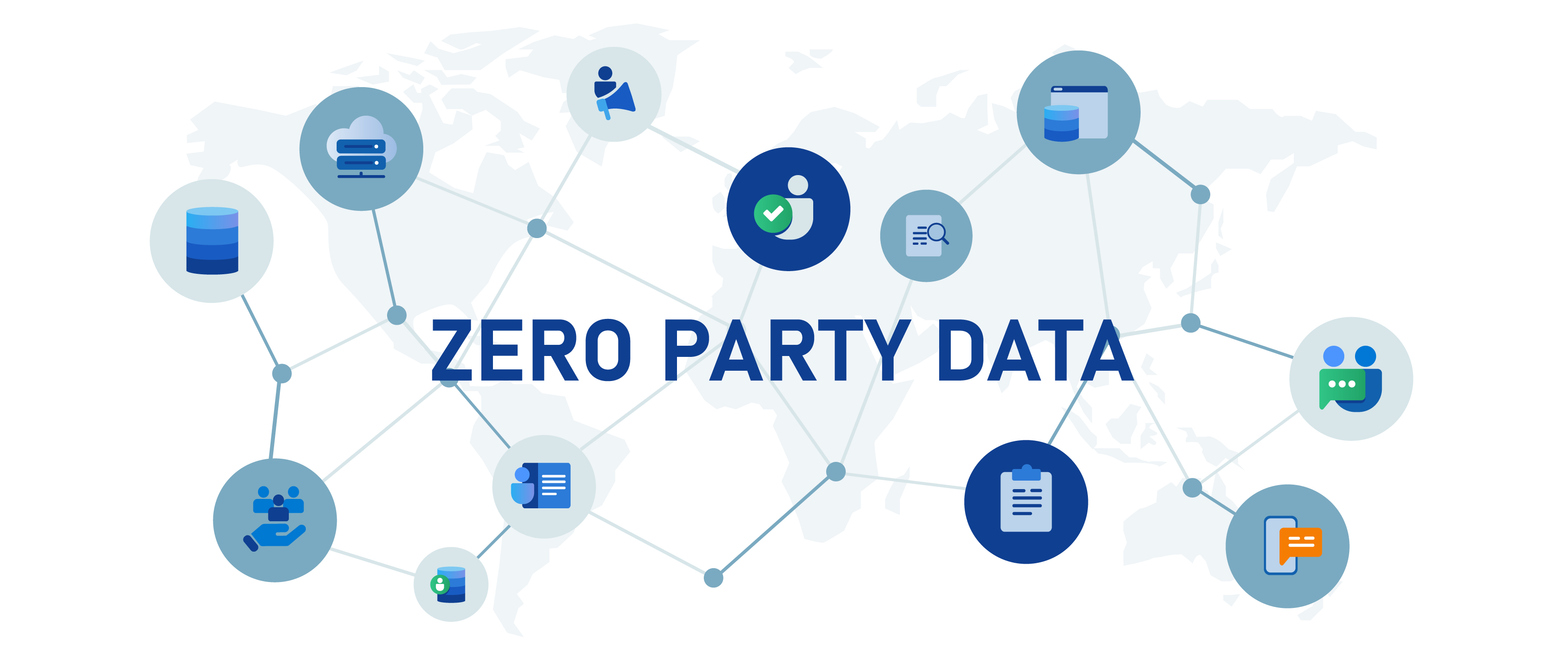Top Strategies to Skyrocket Your Online Lead Generation
The ability to attract online leads can make or break a business. The vast expanse of the internet offers unprecedented opportunities to reach potential clients, but tapping into this potential is no minor feat. It requires a strategic approach rooted in an understanding of both technology and human behavior.

As businesses scramble to secure their digital foothold, the question arises: How can one effectively amplify their online lead generation? Below, we’ll explore tried-and-tested strategies, delivering actionable insights for businesses of all sizes.
From optimizing your website to leveraging the power of content marketing and referral programs, the journey to robust online lead acquisition starts here.
Understanding the Target Audience
The foundation of any successful online lead generation strategy rests on understanding your target audience. Recognizing their needs, preferences, and pain points can significantly improve your marketing effectiveness and enhance user engagement.
Buyer Personas
A buyer persona refers to a semi-fictional representation of the ideal customer. It's crafted based on data and research, providing detailed insights into their demographics, behaviors, and motivations. Creating accurate buyer personas allows businesses to tailor their promotion strategies to address the specific needs and interests of different segments. This precision ensures that marketing efforts resonate more profoundly and yield better results.
Market Research

Market research serves as the backbone of effective customer understanding. Through surveys, interviews, and competitor analysis, businesses can gain invaluable insights into:
1. What their potential customers desire;
2. What challenges they face;
3. How they make decisions, and so on.
Armed with this knowledge, a company can fine-tune its offerings and messaging. Hence, it can align with market demand and maximize the potential for lead conversion.
Customer Behavior
Currently, customers leave behind a trail of online interactions, from website visits to social media engagement. By tracking and analyzing these digital footprints, businesses can uncover patterns and trends in customer behavior.
Tools like Google Analytics, heatmaps, and customer relationship management (CRM) software allow monitoring of customer interactions and derive actionable insights. By understanding the online paths typically taken by customers before making a purchase or inquiry, companies can optimize their online presence, making it more conducive to lead generation.
Optimizing Your Website for Lead Generation
A company's site is often the first point of contact for potential customers. Thus, its proper optimization is crucial for creating positive first impressions and effectively capturing leads.
Website Design & UX
A well-designed website goes beyond aesthetics; it provides a seamless user experience (UX). Its essential components include:
1. A logical layout;
2. Fast load times;
3. Mobile responsiveness.
Users who find it easy to navigate and access information are more likely to engage further, potentially becoming leads or even customers. Consistent branding, clear calls to action, and intuitive site structures all contribute to a positive UX, setting the stage for successful lead generation.
Lead Capture Mechanisms

Effective lead capture mechanisms are integral to converting website visitors into potential clients. Here are some great examples of them:
1. Forms (strategically placed, they can solicit email sign-ups or inquiries);
2. Pop-ups (when used sparingly and effectively, they can highlight special offers or encourage newsletter subscriptions);
3. Chatbots (they can engage visitors in real-time, answering questions and guiding them to relevant site sections).
With multiple touchpoints, businesses can cater to varied visitor preferences, receiving maximum lead capture.
Landing Pages
Landing pages, specifically designed for conversions, are vital for online lead generation. A successful landing page is concise, focused, and free from distractions. The messaging should be clear, with a single, compelling CTA.
Additionally, integrating trust signals, such as testimonials or industry certifications, can further enhance credibility and encourage visitors to take the desired action.
Implementing Content Marketing & SEO
When it comes to digital marketing, content, and SEO emerge as two pivotal pillars. Both play significant roles in attracting and retaining online visitors, paving the way for enhanced lead generation.
You can deploy these techniques on your own or tap into the expertise of specialists. For instance, if you have a cannabis business, partnering with the professional team of an SEO agency specializing in the cannabis niche can equip you with a strong SEO strategy tailored to catching targeted leads.
Top-Notch Content
Quality content is the perfect tool for engaging and educating your audience. It establishes a brand as an authority in its field, builds trust, and drives organic traffic. The key is to create materials that address the pain points and needs of your target audience.

The perfect approach here is also to diversify the content types. You can produce informative blog posts, detailed whitepapers, or fascinating infographics, providing maximum value in different forms. That way, you’ll not only attract visitors but also encourage them to share and engage, amplifying your reach.
Guest Posting & Linking Building
Guest posting is an effective way to connect with new audiences and gain credibility. By contributing high-quality content to reputable sites within your industry, you can position your brand as an expert and generate valuable backlinks. These backlinks, in turn, improve your SEO rankings and attract a curious audience to your platform.
It's important, however, to pursue genuine, organic link-building strategies or choose the right SEO company experienced in performing this task. Prioritizing relevance and quality over quantity implies that backlinks benefit your SEO and lead-generation efforts.
Utilizing Social Media Platforms
With a vast majority of consumers actively using various social networks, it's paramount to harness their potential appropriately. Here are some helpful considerations on that.
Pick the Right Channels
Different social media platforms cater to varied demographics and have distinct user behaviors. It's crucial to identify where your target audience primarily resides. For instance, a B2B company might find LinkedIn more fruitful, while a fashion brand might thrive on Instagram. When you align business objectives with the platform's primary audience, you can optimize your efforts and maximize results.
Run Targeted Ad Campaigns
Modern social media platforms present advanced advertising tools for businesses to target specific user groups based on demographics, interests, and online behavior.

Running ad campaigns tailored to a particular audience segment can yield higher conversion rates.
Build Community
Beyond mere advertising, social media offers an opportunity for genuine interaction with followers. When you actively engage in conversations, respond to comments, and share valuable content, you can foster a sense of community around your brand. This engagement develops trust and enhances brand loyalty, turning followers into advocates who can potentially bring in more leads.
Leveraging Email Marketing
Despite the rapid evolution of digital marketing tools, email remains one of the most effective channels for cultivating leads and building customer loyalty. A well-orchestrated email marketing strategy can yield impressive returns, driving both engagement and conversions.
Subscriber List
The basis of successful email marketing is a robust subscriber list. The best idea is to prioritize organic list-building methods, like providing helpful resources in exchange for email sign-ups. Such practices can make subscribers really interested in your offerings, leading to higher engagement rates.
Effective Newsletters & Drip Campaigns
Regular communication with subscribers keeps a brand top-of-mind. Newsletters can deliver insights, updates, and special offers, while drip campaigns provide a series of emails, often aimed at nurturing leads or onboarding new customers.
The key lies in balancing promotional content with genuine value, ensuring each email serves a purpose and resonates with its recipients.
Personalized Outreach
Not all subscribers are equal, so segmenting an email list is important for more targeted and personalized communication. It can be based on different criteria, such as the following:
1. Purchase history;
2. Geographic location;
3. Engagement levels.
Tailored content for specific segments improves relevance, resulting in increased open rates and more meaningful engagement.
Using Affiliate & Referral Programs
Harnessing the power of partnerships can significantly augment a business's lead-generation efforts. Affiliate and referral programs, when executed correctly, can be a cost-effective way to reach new audiences and add to brand credibility.
Benefits of Affiliate Marketing

Affiliate marketing allows access to external networks and expands reach without the need for massive ad expenditures. When compensating affiliates for driving traffic or sales, companies only pay for actual results, getting a higher return on investment.
Setting up a Referral Program
Word-of-mouth keeps being one of the most trusted forms of advertising. Referral programs incentivize existing customers to introduce new clients to a business. Offers for successful referrals in the form of rewards or discounts can motivate the loyal customer base to actively promote the company's brand. It brings in fresh leads and strengthens relationships with existing clients.
Partnerships with Influencers and Industry Leaders
Collaborating with influencers or industry leaders can elevate a brand's visibility exponentially. These individuals, with their established followings and credibility, can introduce a business to a vast audience.
It's necessary to locate partners whose values align with the brand and whose audience matches the target demographic. When genuine and well-executed, such collaborations can drive substantial engagement and lead inflow.
Analyzing and Refining Your Strategies
The digital landscape is ever-evolving, and so should the strategies that companies employ. Regular analysis and refinement are paramount to ensuring ongoing effectiveness and capitalizing on new opportunities that arise.
Analytics and Tracking
Analytics offer a window into the performance of online efforts. By closely monitoring metrics such as website traffic, bounce rate, and conversion percentages, businesses can gain insights into what's working and what's not.

Tracking tools, like Google Analytics or specialized CRM systems, provide detailed data on user behavior and campaign performance. This data is invaluable in making informed decisions and fine-tuning strategies for optimum results.
A/B Testing
A/B testing, or split testing, is a method of comparing two versions of a web page or campaign to determine which one performs better. When you make incremental changes—like altering the color of a call-to-action button or tweaking headline copy—and analyze which version garners better results, you can continually refine your online presence.
This iterative process implies that websites and campaigns are optimized for the highest possible conversions.
Continuous Adapting
New technologies and trends emerge day by day. Staying updated on industry shifts is essential to keeping strategies relevant and effective. Whether it's a change in search engine algorithms, the rise of a new social media platform, or evolving user behavior, businesses need to be agile, ready to adapt, and pivot when necessary.
Coming to the Upshot
Successful online lead generation is a multifaceted endeavor, demanding a blend of strategic insight and tactical execution. From understanding the intricacies of the target audience to using the strengths of various digital channels, businesses should adopt a comprehensive approach.
Analytics and adaptability are necessary to ensure all the strategies remain relevant and optimized. As digital avenues continue to evolve, a commitment to continuous learning and refinement stands paramount. By embracing these principles, companies can position themselves for sustained online growth and success.

![500+ Campaign Pictures [HD] | Download Free Images on Unsplash](https://plus.unsplash.com/premium_photo-1661590875743-e66ecb5f9923?ixlib=rb-4.0.3&ixid=M3wxMjA3fDB8MHxzZWFyY2h8MXx8Y2FtcGFpZ258ZW58MHx8MHx8fDA%3D&w=1000&q=80)






